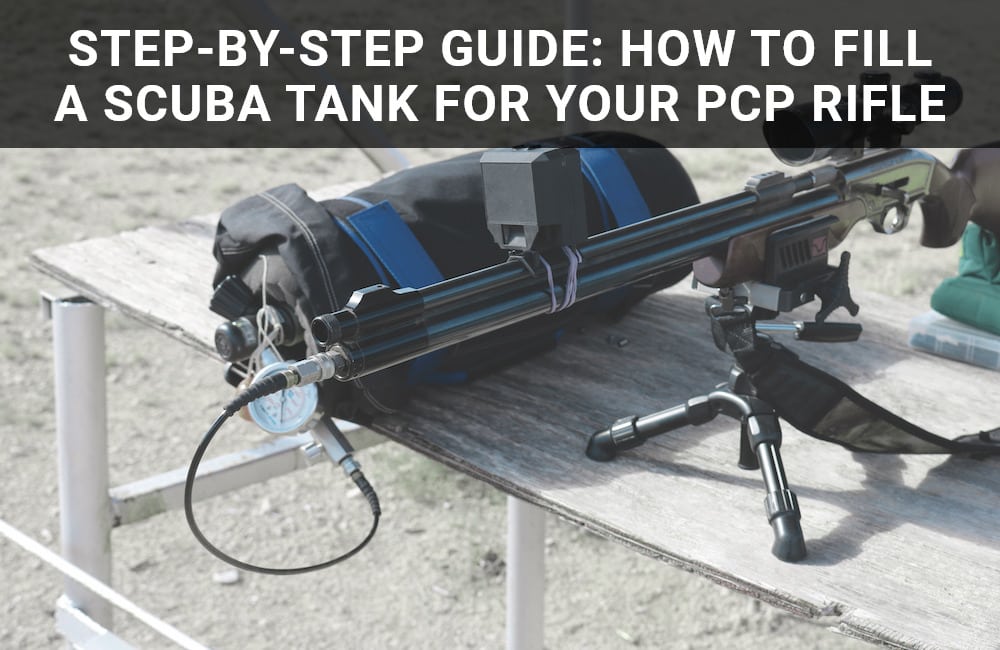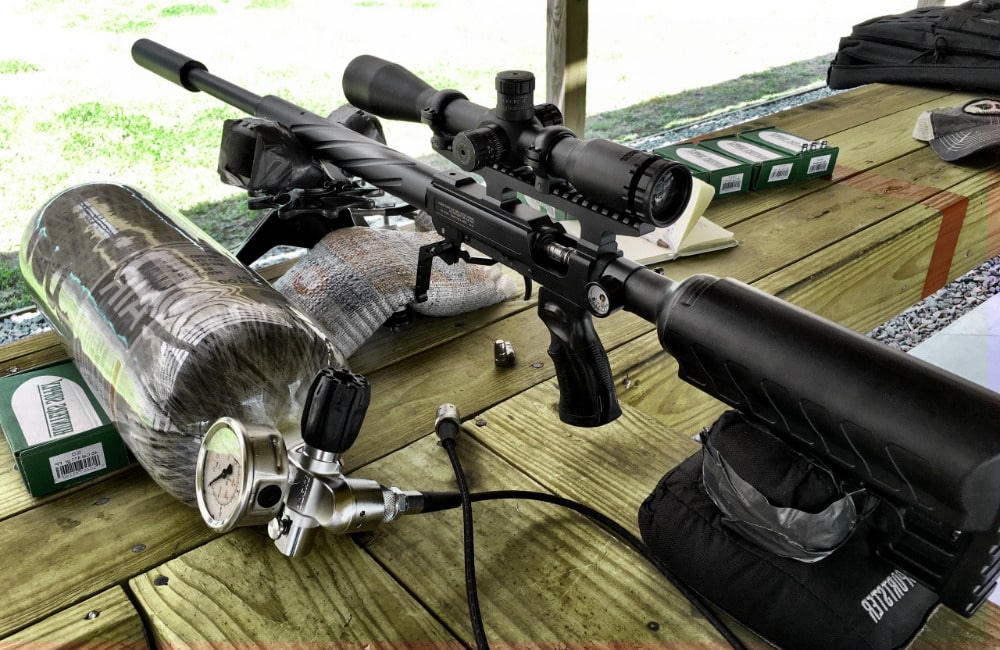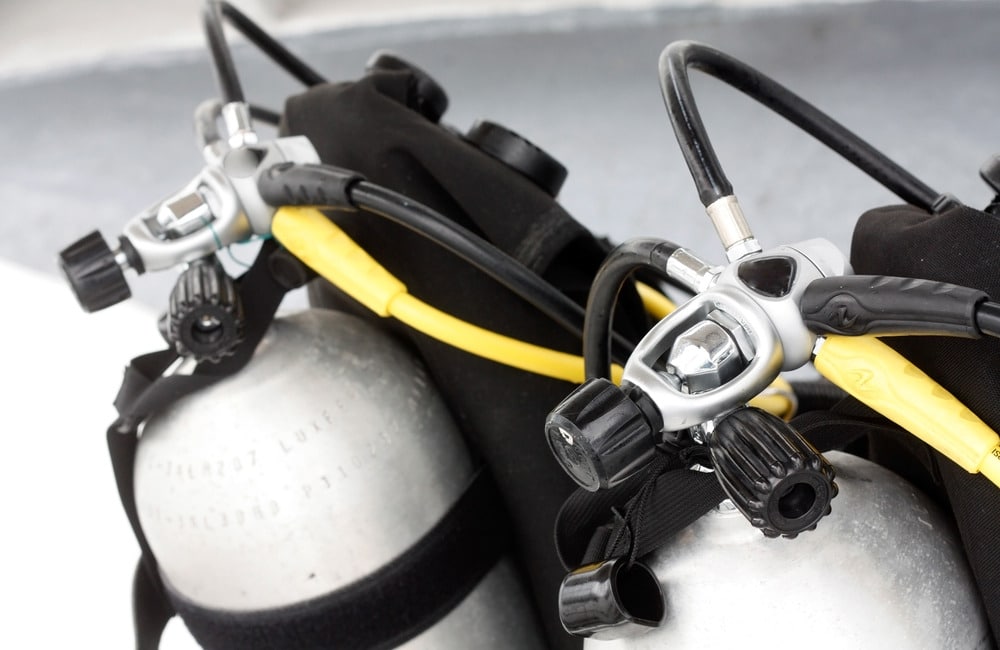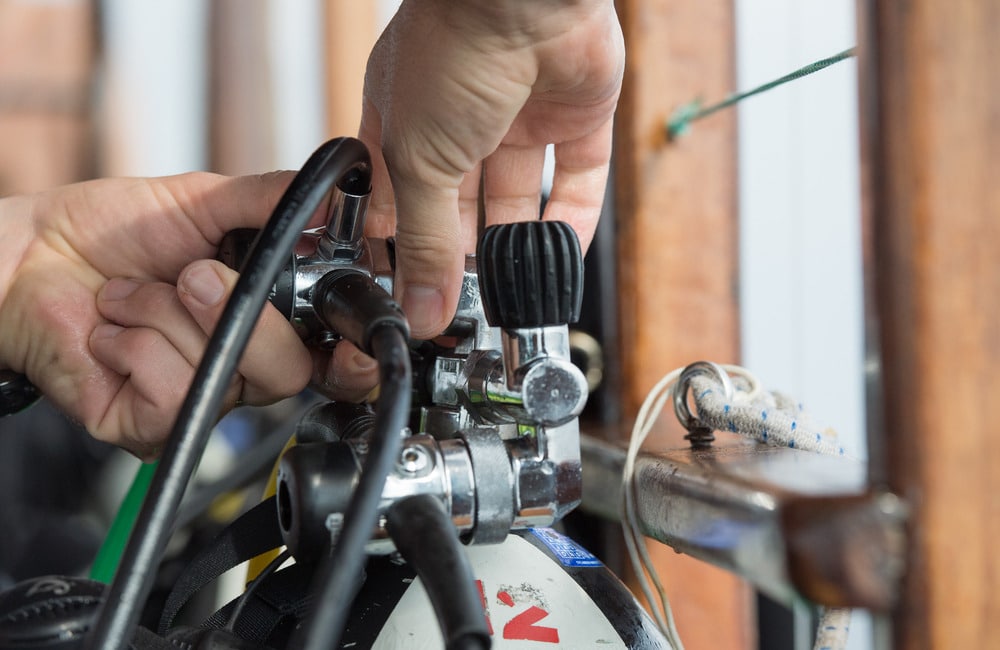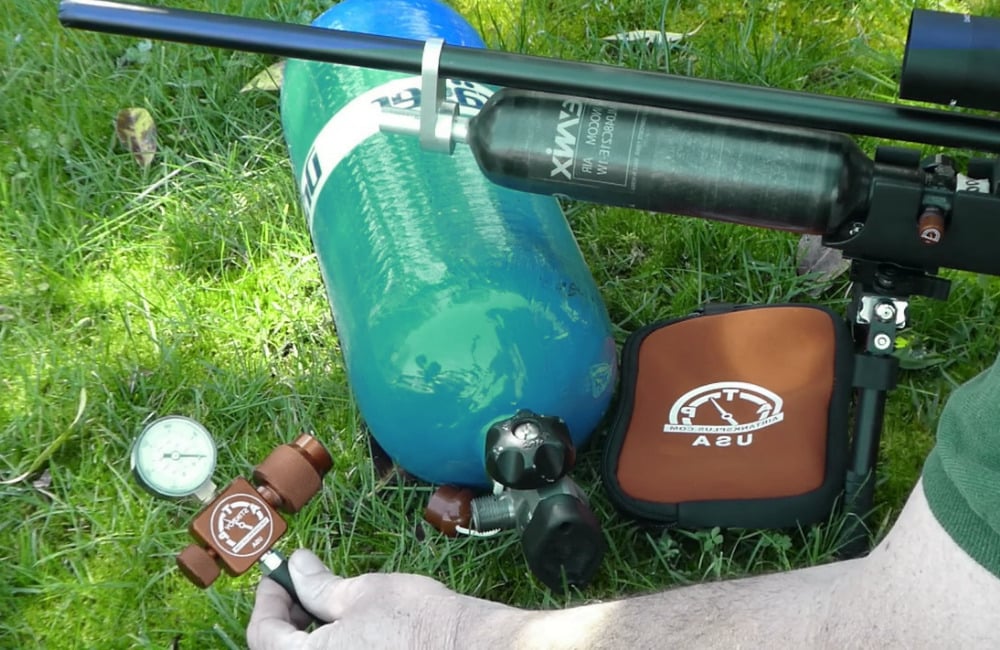Blog
Step-by-Step Guide: How to Fill a Scuba Tank for Your PCP Rifle
Are you ready to take your PCP rifle shooting experience to the next level? Then you’ll want to make sure it’s filled with air using a scuba tank. This step-by-step guide will show you exactly how to fill a scuba tank for your PCP rifle.
We will cover all the key steps, from preparing and assembling your equipment, filling the cylinder safely and efficiently, monitoring pressure levels, and finally topping off with just the right amount of air for optimal performance. With this comprehensive guide in hand, diving into this exciting activity can be both enjoyable and rewarding!
A pre-charged pneumatic rifle, or PCP rifle, uses high-pressure air or gas to propel pellets. Scuba tanks are commonly used to fill PCP rifles because they hold pressurized air and provide a convenient way to charge the rifle to operating pressure, typically between 2,000 and 4,500 psi.
The pressurized air is released from the scuba tank into the rifle’s reservoir, and the rifle uses the stored high-pressure air to fire pellets via a metered release of the air. PCP rifles are popular because they provide a consistent power plant, are relatively quiet, and have minimal recoil compared to spring-piston or CO2-powered air rifles.
Scuba tanks are an essential component for those who own pre-charged pneumatic (PCP) rifles, as they are necessary for pressurizing the air chamber of the weapon. However, filling a scuba tank correctly can be a daunting task for beginners.
That’s where this guide comes in. Our step-by-step instructions aim to provide a comprehensive overview of how to fill a scuba tank specifically for a PCP rifle, ensuring that every owner has the knowledge and confidence to do so safely and effectively. Whether you are new to the world of PCP rifles or simply need a refresher, let this guide be your go-to resource for all things related to scuba tank filling.
Required Equipment
When filling a scuba tank for a pre-charged pneumatic (PCP) rifle, it’s crucial to have the necessary equipment to ensure accuracy and safety.
- Firstly, a scuba tank is needed to hold the compressed air that will be used to fill the rifle’s tank.
- Secondly, a fill station is necessary to regulate the amount of air being transferred from the scuba tank to the PCP rifle.
- Thirdly, a pressure gauge is crucial to ensure that the tank’s pressure matches the requirements of the rifle being filled. These three pieces of equipment work together to provide proper air pressure and flow during the filling process, making it possible to enjoy the best possible performance from the PCP rifle. Investing in high-quality equipment is essential in ensuring a trouble-free experience.
All these pieces of equipment are indispensable and make the process of filling a scuba tank for a PCP rifle safe and straightforward. Each of these pieces of equipment plays a critical role in the process of filling a scuba tank for a PCP rifle.
A scuba tank provides the necessary compressed air to operate the rifle, while the fill station ensures the air is delivered in a safe and efficient manner. By monitoring pressure levels throughout the process, shooters can maintain the safety and reliability of their equipment. Proper use of these pieces of equipment is essential for safe and successful scuba tank filling.
Preparing the Scuba Tank
Before diving, it’s crucial to properly inspect the scuba tank to ensure its safety and reliability. Start by checking the tank’s external appearance. Look for any dents or scratches that might indicate damage to the tank’s structural integrity.
Then, check the valve and make sure it is secure and free of any corrosion or damage. Next, examine the tank’s air pressure level with a pressure gauge. Verify that the pressure level corresponds with the manufacturer’s recommended pressure range before using the tank.
Lastly, it’s essential to check the tank’s hydrostatic inspection date. Tanks should be inspected and retested every five years to ensure they are in good condition and safe to use. Following a thorough inspection of the scuba tank before each use can help prevent potential dangers and ensure a safe and enjoyable diving experience.
Attaching the fill station to your scuba tank and tightening it securely is an essential step in properly filling your tank. First, ensure that the tank valve is closed before beginning the process. Next, take the fill station and place it onto the tank valve, followed by tightening the charging yoke or connection using a wrench or similar tool. This will create a secure seal between the fill station and the scuba tank.
Once the fill station is securely attached, it’s time to connect the pressure gauge to the fill station. This will allow you to check the pressure level of the scuba tank, ensuring that it is filled to the correct level for your dive.
Double-check that all connections are properly tightened before proceeding. By following these steps, you can safely and effectively attach the fill station to your scuba tank and ensure that your equipment is functioning properly during your dive.
Filling the Scuba Tank
Filling a scuba tank can be a task that requires careful attention to detail. When using an air compressor to fill a PCP rifle, it is important to first turn on the compressor and allow it to reach the correct level of pressure. The pressure level will depend on the specific requirements of the rifle and should be carefully researched beforehand. Once the compressor has reached the desired level, carefully attach the PCP rifle’s fill adapter to the tank valve and begin the filling process.
Attaching the fill station to your PCP rifle and opening the valve to fill it with air may seem like a daunting task, but it’s actually quite simple with the right technique and tools. Before starting, ensure that you have a compatible fill station and that it is securely fastened to your rifle. Next, connect your scuba tank to the fill station and slowly turn on the valve to start the fill. Monitoring the pressure level is crucial to prevent overfilling, so it is recommended to use a gauge or other pressure monitoring device.
As a diver, it’s essential always to keep an eye on the pressure level of your scuba tank to ensure safe and efficient diving. One essential tip for monitoring pressure levels is using a reliable pressure gauge to keep track of the tank’s air supply.
Another useful technique is keeping the tank steady and level as it is being filled to avoid inaccurate readings. It’s also critical to communicate effectively with the person filling your tank and notifying them when to stop filling once the desired pressure is reached. Remember, never exceed the maximum level of your scuba tank, and always be cautious when diving to ensure the safety of yourself and others.
Safety Considerations
When filling a scuba tank for a PCP rifle, there are crucial safety considerations to keep in mind. One of the most important is to always wear proper protective gear, such as gloves and eye protection, to prevent any injuries that may occur during the filling process. Overfilling the tank can also be a major safety hazard, as it can cause the tank to rupture or explode.
To prevent this, it is essential to carefully monitor the tank’s pressure and only fill it to the appropriate level. Additionally, it is crucial to use high-quality filling equipment and to handle the tank with care to prevent any damage. By following these important safety guidelines, it is possible to safely fill a scuba tank for a PCP rifle and avoid any potential accidents or injuries.
As divers, we all know how important it is to prioritize safety. And part of ensuring our safety is properly storing our scuba tanks when they are not in use. It is essential to store tanks in areas that are clean and dry to prevent any rust or corrosion. Additionally, tanks should always be stored in an upright position and secured to prevent them from falling over.
However, proper storage is not the only factor to consider when it comes to scuba tanks. Regular inspections are equally important. Tanks should be inspected periodically for any signs of wear and tear, such as cracks or dents, and tested for leaks. By taking the necessary precautions when storing and inspecting our scuba tanks, we can ensure our safety during our dives.
Conclusion
Filling a scuba tank for a PCP rifle is a process that requires vigilance, practice, and a commitment to safety. It is important to follow the right steps to prevent accidents and ensure that your tank is properly filled. The key steps include checking the tank for damage, attaching the fill adaptor to the scuba tank, and slowly filling the rifle to the recommended pressure level.
Always wear protective gear, work in a well-ventilated area, and have a trained professional inspect your equipment. It is important to follow the guidelines and safety procedures to prevent accidents. If you want to learn more about PCP rifles and scuba tank fills, there are many educational resources available online and through certified professionals.
Also, safety is crucial in this process, so make sure to take all necessary precautions and follow all guidelines to guarantee a safe and successful fill.
